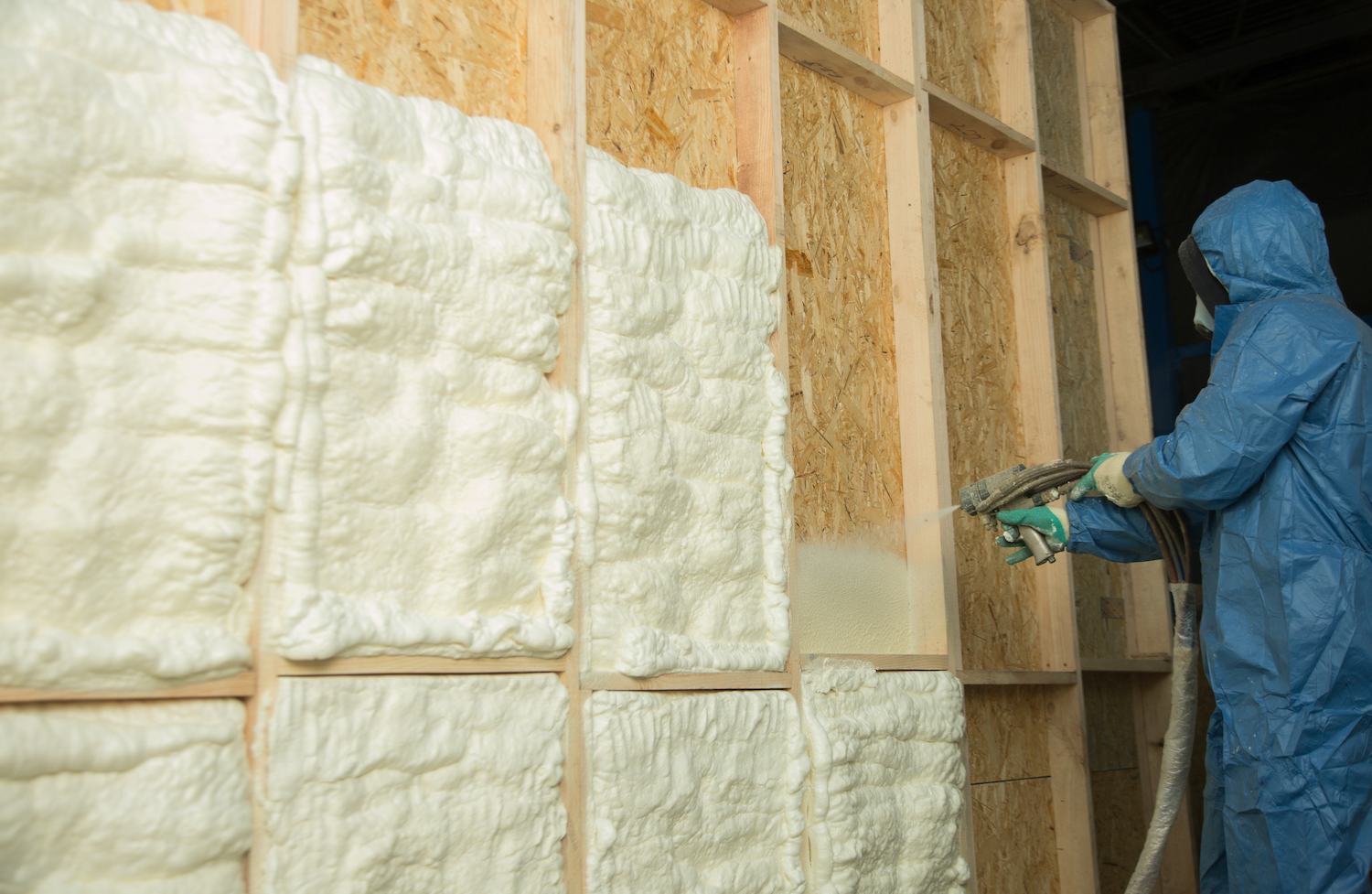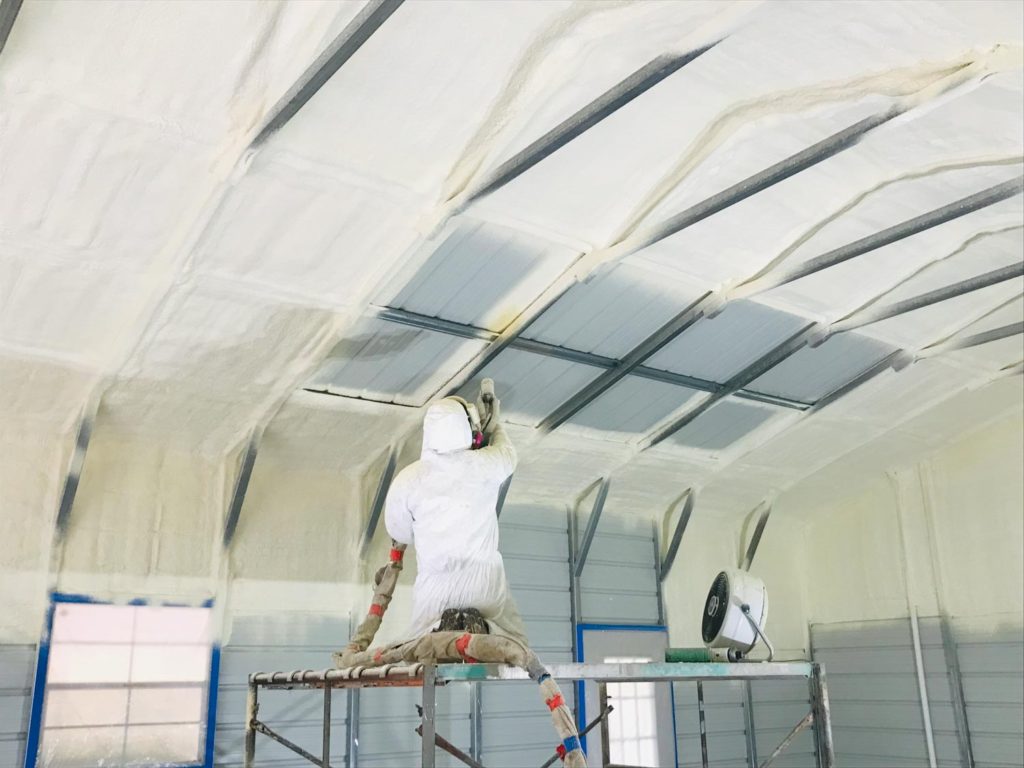Spray foam insulation keeps your home comfortable year-round by creating an airtight barrier that reduces heat transfer, controls indoor humidity, and eliminates drafts. By sealing cracks and gaps more effectively than other types of insulation, spray foam maintains a consistent indoor temperature regardless of outside weather conditions. It acts as a protective shield, preventing outdoor temperature swings from affecting indoor comfort.
Because of its superior thermal resistance and moisture control capabilities, spray foam not only improves comfort but also boosts energy efficiency and indoor air quality. This guide explores how spray foam works, types available, technical details, real-world market data, factors to consider before choosing insulation, and answers to common homeowner questions.

Understanding How Spray Foam Insulation Works
Spray foam insulation is a two-component mixture that expands rapidly upon application, filling gaps, cracks, and cavities. It acts as both insulation and an air sealant, delivering high-performance protection against external conditions.
Primary Benefits:
- Reduces heat loss in winter and heat gain in summer.
- Improves indoor air quality by blocking allergens and pollutants.
- Controls humidity levels by resisting water infiltration.
- Lowers energy costs by minimizing HVAC system strain.
- Enhances building strength through additional structural support.
Key Mechanisms of Comfort Improvement
| Mechanism | Effect |
| Air Sealing | Eliminates drafts and maintains stable indoor temperatures |
| Moisture Barrier | Reduces humidity, preventing mold and mildew growth |
| Thermal Resistance | Slows down heat transfer, keeping indoor spaces comfortable |
| Structural Support | Adds rigidity to walls and roofs, improving building integrity |
| Sound Dampening | Reduces noise transmission for quieter indoor environments |

Types of Spray Foam Insulation
There are two primary types of spray foam used in residential construction. Each serves specific needs based on climate, building structure, and intended application.
Comparison Table of Spray Foam Types
| Type | Density | R-Value per Inch | Best For | Features |
| Open-Cell | ~0.5 lb/ft³ | R-3.5 to R-3.8 | Interior walls, soundproofing | Flexible, breathable, cost-effective |
| Closed-Cell | ~2 lb/ft³ | R-6 to R-7 | Exterior walls, roofing, basements | High rigidity, water resistance, superior insulation |
Open-cell foam is often preferred for interior projects where moisture is not a significant concern, while closed-cell foam is used for its dense, durable, and water-resistant properties, particularly in basements, crawl spaces, and exterior walls.
Bonus Tip: In humid climates, closed-cell foam often outperforms open-cell due to its higher moisture resistance and ability to add structural strength.
Technical Specifications and Performance Data
Understanding the technical metrics of spray foam helps homeowners and contractors make informed decisions tailored to the building’s unique needs.
| Property | Open-Cell Spray Foam | Closed-Cell Spray Foam |
| R-Value | 3.5 – 3.8 | 6.0 – 7.0 |
| Water Resistance | Low | High |
| Vapor Permeability | High | Low |
| Application Thickness | 3″ – 4″ typical | 1″ – 2″ per pass |
| Sound Dampening | Excellent | Moderate |
| Cost per Square Foot (Installed) | $0.45 – $0.65 | $1.00 – $1.50 |
| Structural Reinforcement | Low | High |
Market Fact: According to the U.S. Department of Energy, homes that incorporate comprehensive air sealing with high-quality spray foam insulation can save between 15% and 20% annually on heating and cooling costs.
Bonus Tip: Installing spray foam in attics and crawl spaces first can provide the fastest return on investment by reducing the largest sources of energy loss.
Things to Consider Before Making a Decision
Choosing the right spray foam insulation requires a balanced understanding of your home’s specific needs, the climate you live in, and your long-term energy efficiency goals.
- Climate Zone: Colder regions benefit more from higher R-value closed-cell spray foam.
- Moisture Levels: High humidity areas, basements, and crawl spaces favor closed-cell applications.
- Budget: Open-cell spray foam is generally less expensive but offers lower R-values per inch.
- Building Age: Older homes may need structural reinforcements or remediation before spray foam application.
- Code Compliance: Local codes may dictate specific fire retardant or vapor barrier requirements.
- Accessibility: Some areas may be difficult to reach, affecting installation time and cost.
- Future Renovations: Consider how easily walls or ceilings can be modified after foam installation.
Bonus Tip: Always verify that your insulation contractor performs blower door tests before and after installation to measure the true effectiveness of air sealing improvements.
Common Questions About Spray Foam Insulation
Can spray foam insulation be installed in existing walls?
Yes, spray foam can be injected into existing walls, though access points will need to be cut into the wall surface. Proper restoration post-installation ensures minimal visual disruption.
Is spray foam insulation safe for indoor air quality?
Once fully cured, spray foam becomes inert and does not emit volatile organic compounds (VOCs), making it safe for residential environments.
How long does spray foam insulation last?
Spray foam typically lasts 20 to 30 years, and often longer, retaining its insulating properties without sagging, settling, or breaking down over time.
Can spray foam help with soundproofing?
Open-cell spray foam is particularly effective for soundproofing due to its density and elasticity, significantly reducing airborne noise between rooms.
Is spray foam resistant to pests?
While spray foam does not attract pests or provide a food source, it does not serve as a pest repellent. Additional pest control measures may still be advisable.
Spray Foam Insulation FAQ
How long does spray foam insulation take to install?
Installation generally takes between one and two days depending on project size and complexity. Proper preparation and curing time are essential for best results.
Does spray foam insulation prevent mold?
Spray foam does not foster mold growth due to its closed-cell structure in water-resistant variants. However, moisture management through proper home design remains crucial.
What is the R-value?
R-value is a measure of thermal resistance. The higher the R-value, the better a material insulates. Closed-cell spray foam offers some of the highest R-values available among insulation materials.
Can spray foam be painted?
Yes. After curing and trimming, spray foam can be coated with paint to blend seamlessly with existing walls or ceilings.
Does spray foam insulation help reduce energy bills?
By improving thermal performance and reducing air leaks, spray foam insulation significantly cuts heating and cooling expenses over time.
Make the Right Decision
Spray foam insulation is a transformative choice for homeowners seeking to enhance year-round comfort, energy efficiency, and indoor air quality. It provides an unbeatable combination of air sealing, moisture control, and high R-values. Before choosing a specific type or application method, evaluate your home’s climate zone, structural characteristics, and renovation goals.
Work only with certified, experienced insulation contractors to ensure safe and effective application. Proper installation not only maximizes performance but also ensures compliance with local codes and environmental standards. With the right planning and expertise, spray foam insulation can offer comfort, savings, and peace of mind for decades.